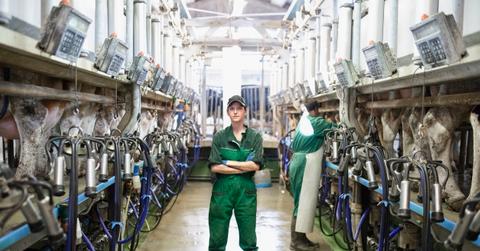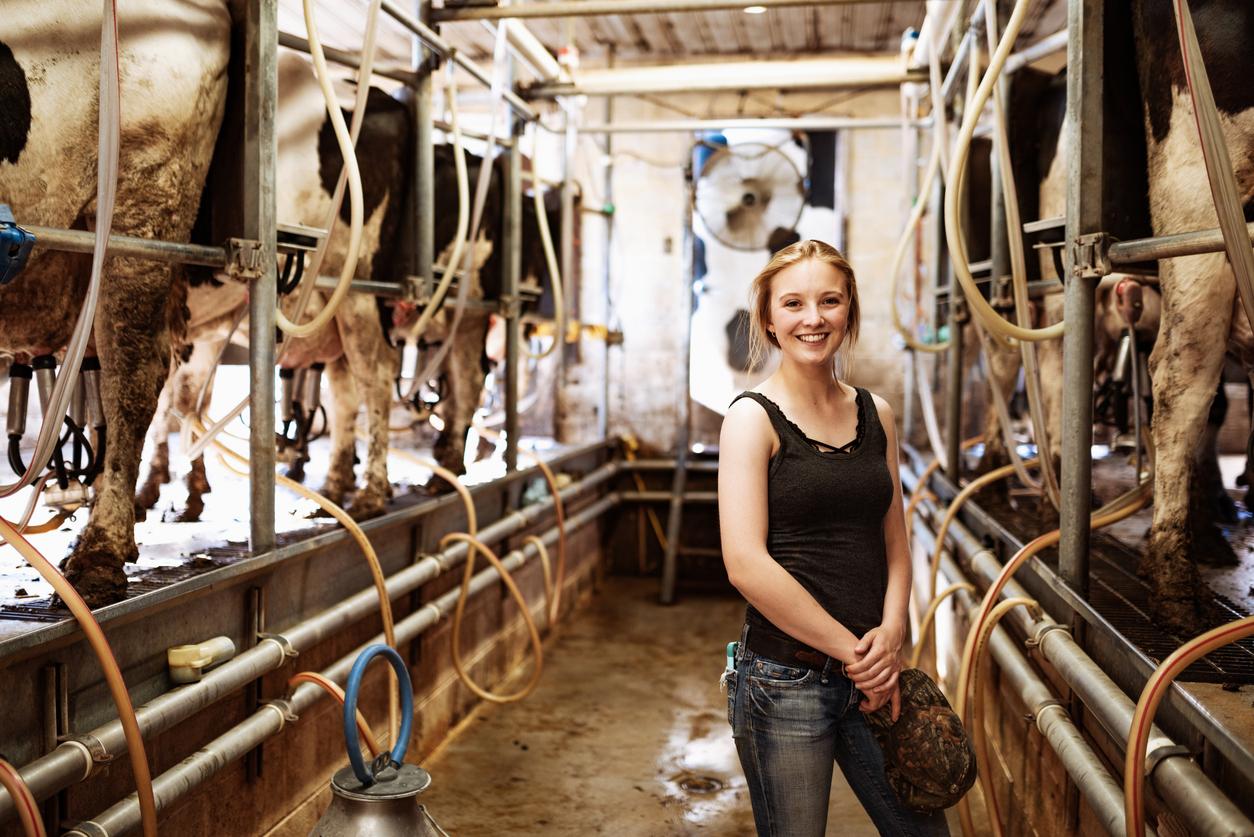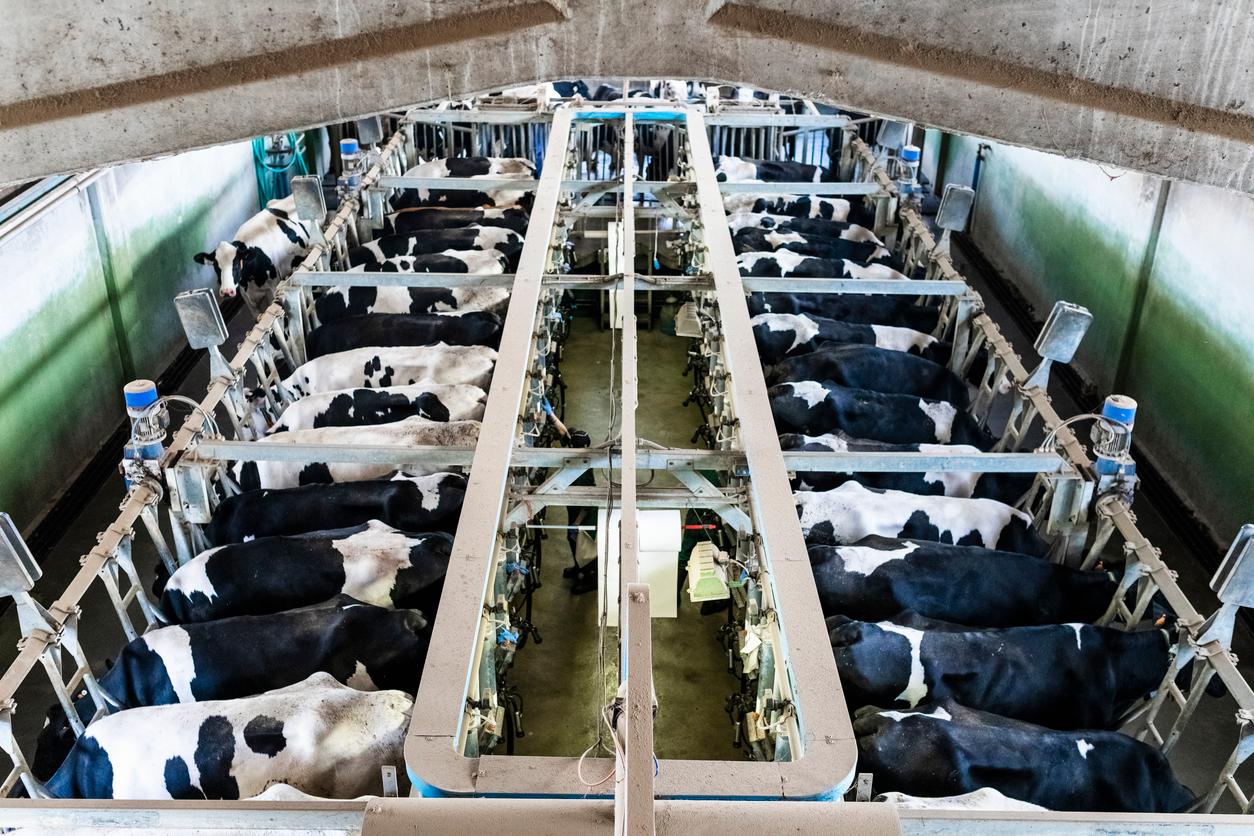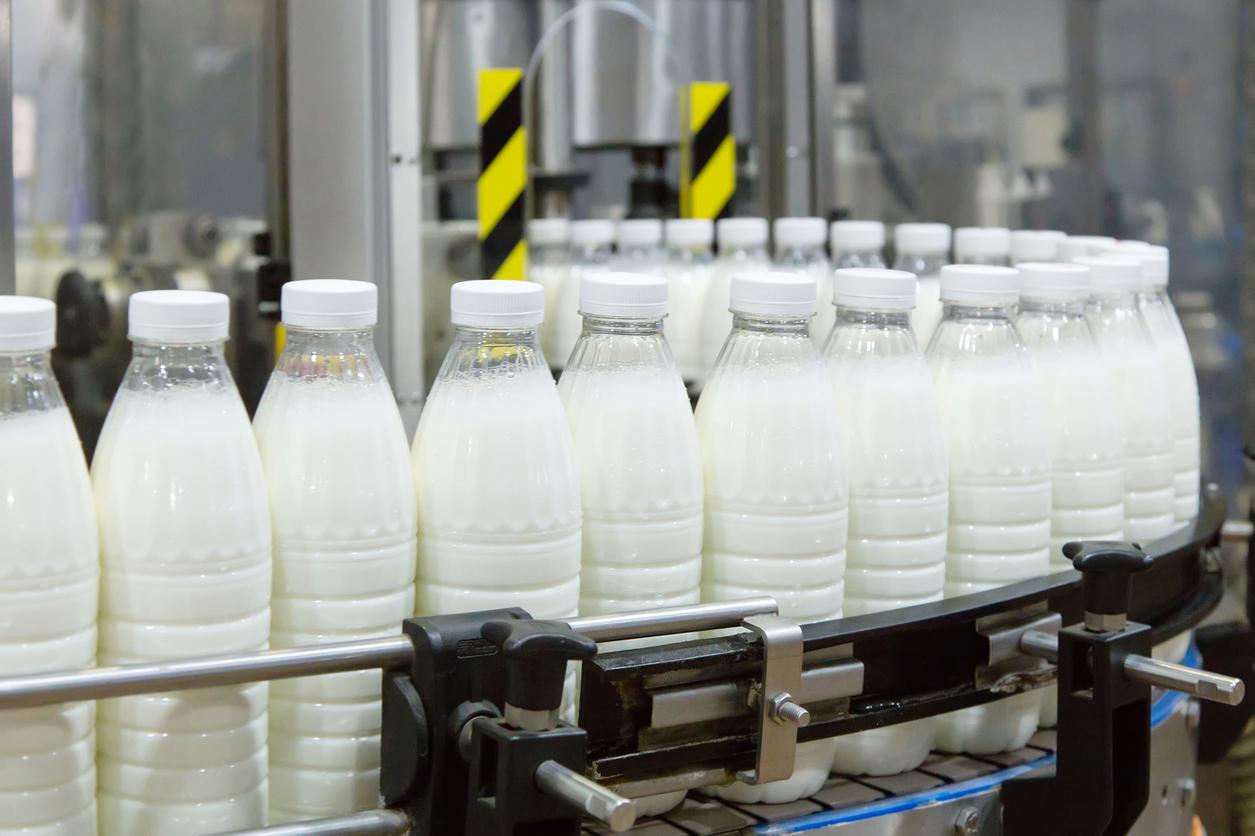How Is Milk Made? The Realities of the Dairy Industry Underscore the Cruel Process
Dairy cows endure extreme cruelty to mass produce milk.
Published July 5 2024, 1:22 p.m. ET

The realities of the dairy industry behind closed doors are catastrophically brutal. Dairy cows undergo torturous treatment throughout their lives to produce the milk that leads to millions of gallons that end up as waste, and marketing tactics like humane washing deceive consumers into believing cows are treated well.
As families wonder amid avian flu concerns if they can contract the virus from dairy milk, it's only natural people would question how milk is made.
As you continue learning how milk is made and how cows are subjected to cruelty in industrial farming operations, you'll want to run to your nearest market to support companies producing sustainable non-dairy milk.

How is milk made? Cows are exploited throughout the process.
Cows are forced to produce milk in massive quantities, and the notion that cows enjoy being milked is another successful marketing tactic employed by the dairy industry. The bucolic image of dairy cows delicately milked by hand by farmers is misleading, as undercover investigations and documentaries reveal the behind-the-scenes horrors on dairy farms.
So, then, how is milk made? The plight of the dairy cow, per Switch4Good, is extremely dire. Dairy cows spend their lives inside factory farming operations, never to enjoy the rich pastoral fields depicted on dairy cartons.
Dairy cows are forcefully inseminated to produce milk — typically for three years before being slaughtered — and suffer from significant health issues that go untreated, per Compassion in World Farming.
Once a dairy cow gives birth in unhygienic conditions, males are removed, to be killed or fattened at an unsustainable rate, and soon after slaughtered and sold as veal. Females are raised as successors once the mother cow cannot produce milk.
There are seemingly endless videos of dairy cows, having just given birth, heartbreakingly chasing after farm workers who tear the newborn calf away and haul them off in confined crates in trucks.

Like most mammals, mother cows are primed to produce milk after giving birth. Instead of a peaceful reunion with their babies, per Switch4Good, mother cows are confined to a machine that extracts the milk from her. The resulting milk production is not utilized to feed her young but rather to be sold to consumers, per Animal Equality.
Per The Humane Society of the United States, this cycle of sorrow repeats annually: "Calves are taken from their mothers the day they are born, while mother cows are forcibly impregnated over and over to produce milk for calves they’ll never see again."

Then, milk is pasteurized, bottled, and prepared to be sold in markets.
According to Scientific American, despite the risk of being infected by avian flu and other harmful pathogens, raw milk sales are increasing. Still, most experts recognize that once milk is picked up from dairy farms and delivered by truck to processing plants, "opportunities for contamination by pathogens that cause illness and organisms that make food spoil" abound.
Thus, the pasteurization process is employed to remove or limit harmful organisms.
Dairy farms are contracted by companies to produce milk on their behalves. Once the milk moves from farm to processing plant to be pasteurized, it will soon after be bottled and shipped to stores to be sold.
How is non-dairy milk made?
As innovators like World of Vegan's Michelle Cehn show, non-dairy milk is affordable and simple to make at home, generally by blending the soaked main ingredient with fresh water and then straining the liquid. It is ubiquitous in markets across the U.S., and gadgets are sold commercially to make the process even easier.
All non-dairy milk varieties are more eco-friendly and sustainable than cow's milk, and their production involves 100 percent less cruelty. Oat milk, hemp milk, and pea protein milk are some of the most eco-friendly options that the Green Matters team enjoys.